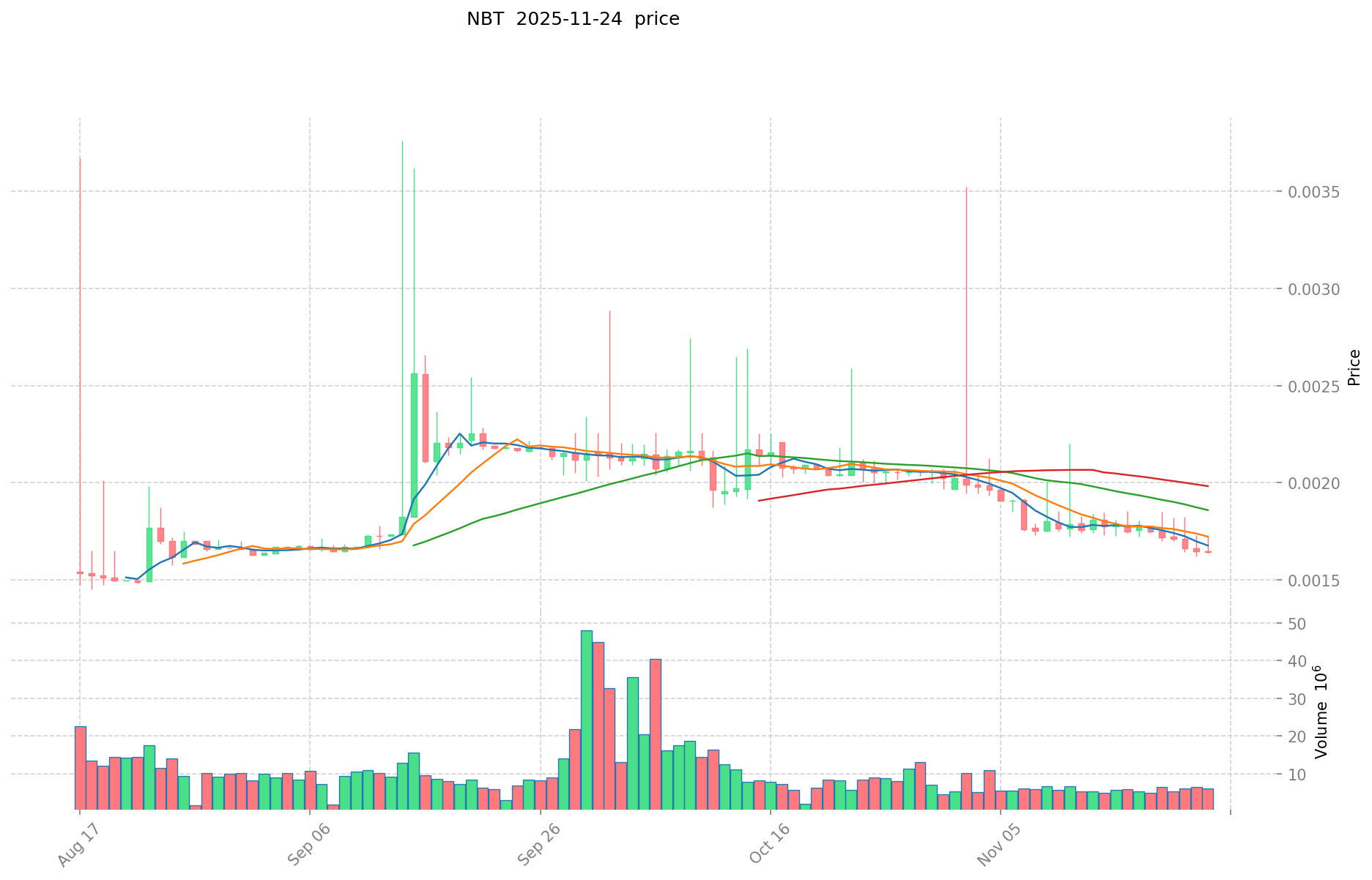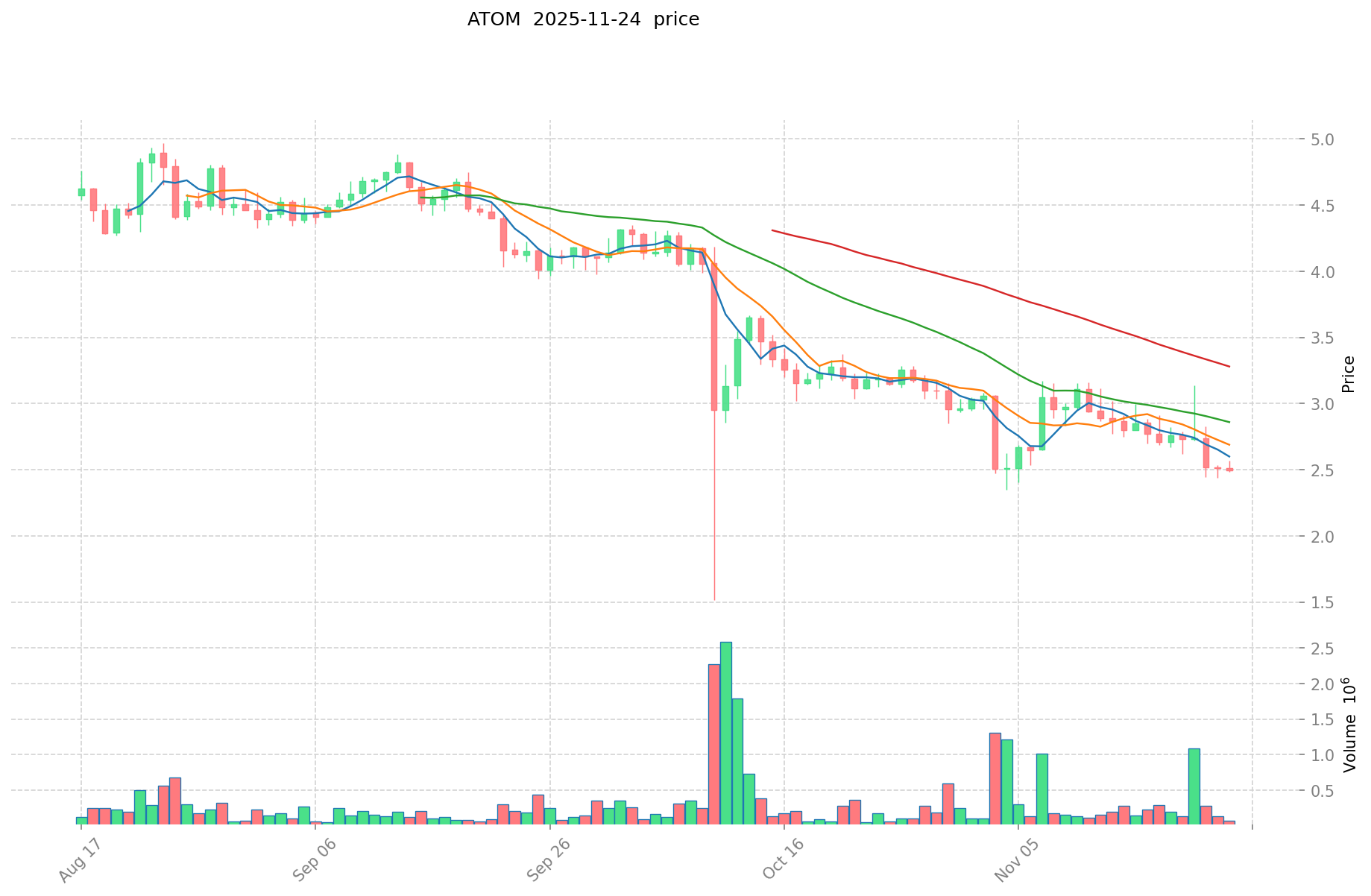NBT vs ATOM: Comparing Data Formats for Efficient Game Asset Management
Introduction: NBT vs ATOM Investment Comparison
In the cryptocurrency market, the comparison between Nanobyte (NBT) and Cosmos (ATOM) has been an unavoidable topic for investors. The two not only show significant differences in market cap ranking, application scenarios, and price performance but also represent different positions in the crypto asset landscape.
Nanobyte (NBT): Since its launch in 2022, it has gained market recognition for bridging the gap between cryptocurrency and real-world financial applications.
Cosmos (ATOM): Introduced in 2019, it has been hailed as a pioneer in blockchain interoperability, becoming one of the most significant cryptocurrencies in terms of global trading volume and market capitalization.
This article will comprehensively analyze the investment value comparison between NBT and ATOM, focusing on historical price trends, supply mechanisms, institutional adoption, technological ecosystems, and future predictions, attempting to answer the question investors care about most:
"Which is the better buy right now?"
I. Price History Comparison and Current Market Status
NBT and ATOM Historical Price Trends
- 2022: ATOM reached its all-time high of $44.45 on January 17, 2022.
- 2020: ATOM hit its all-time low of $1.16 on March 13, 2020.
- Comparative Analysis: Over the past year, NBT has declined from its previous levels to $0.0016456, while ATOM has fallen from its peak to the current price of $2.49.
Current Market Situation (2025-11-24)
- NBT current price: $0.0016456
- ATOM current price: $2.49
- 24-hour trading volume: NBT $9,920.12 vs ATOM $180,409.16
- Market Sentiment Index (Fear & Greed Index): 19 (Extreme Fear)
Click to view real-time prices:
- View NBT current price Market Price
- View ATOM current price Market Price
<>
二、代币信息与基本面对比
{NBT(Coin A)} 基本信息
{ATOM(Coin B)} 基本信息
代币基本面分析
>


II. Core Factors Affecting Investment Value of NBT vs ATOM
Supply Mechanisms Comparison (Tokenomics)
- NBT: Fixed supply model with a maximum cap of 100 million tokens
- ATOM: Inflationary model with dynamic issuance adjusted through governance
- 📌 Historical Pattern: Fixed supply assets like NBT tend to show higher price volatility during bull markets, while ATOM's inflation model provides stability for validators but creates constant selling pressure.
Institutional Adoption and Market Applications
- Institutional Holdings: ATOM has gained more institutional recognition through its IBC protocol integration with major exchanges
- Enterprise Adoption: ATOM demonstrates stronger enterprise utility through the Cosmos Hub's interoperability solutions for cross-chain settlements
- Regulatory Attitudes: Both tokens face similar regulatory treatment as utility tokens, though ATOM benefits from broader jurisdiction acceptance due to its established governance model
Technical Development and Ecosystem Building
- NBT Technical Upgrades: Recent implementation of layer-2 scaling solutions improving transaction throughput
- ATOM Technical Development: Continuous evolution of the Inter-Blockchain Communication protocol enabling seamless cross-chain operations
- Ecosystem Comparison: ATOM leads with a robust DeFi ecosystem and cross-chain applications, while NBT focuses more on niche payment solutions
Macroeconomic and Market Cycles
- Inflation Environment Performance: ATOM's staking mechanism provides inflation protection through yield generation
- Macroeconomic Policy Impacts: Both tokens show negative correlation with interest rate hikes, with NBT historically demonstrating higher sensitivity
- Geopolitical Factors: ATOM's cross-chain infrastructure provides greater utility during periods of increased cross-border transaction demand
III. 2025-2030 Price Prediction: NBT vs ATOM
Short-term Prediction (2025)
- NBT: Conservative $0.001415 - $0.001645 | Optimistic $0.001645 - $0.002320
- ATOM: Conservative $1.8104 - $2.48 | Optimistic $2.48 - $2.6536
Mid-term Prediction (2027)
- NBT may enter a growth phase, with estimated price range $0.002069 - $0.003191
- ATOM may enter a bullish market, with estimated price range $2.1920 - $3.9769
- Key drivers: Institutional capital inflow, ETF, ecosystem development
Long-term Prediction (2030)
- NBT: Base scenario $0.002774 - $0.003467 | Optimistic scenario $0.003467 - $0.003606
- ATOM: Base scenario $3.9034 - $4.0660 | Optimistic scenario $4.0660 - $6.0584
Disclaimer: The above predictions are based on historical data and market analysis. Cryptocurrency markets are highly volatile and subject to rapid changes. These projections should not be considered as financial advice. Always conduct your own research before making investment decisions.
NBT:
| 年份 | 预测最高价 | 预测平均价格 | 预测最低价 | 涨跌幅 |
|---|---|---|---|---|
| 2025 | 0.002320296 | 0.0016456 | 0.001415216 | 0 |
| 2026 | 0.00241919656 | 0.001982948 | 0.0011897688 | 20 |
| 2027 | 0.003191554806 | 0.00220107228 | 0.0020690079432 | 33 |
| 2028 | 0.00318164998074 | 0.002696313543 | 0.00231882964698 | 63 |
| 2029 | 0.003997015196143 | 0.00293898176187 | 0.002086677050927 | 78 |
| 2030 | 0.003606718418166 | 0.003467998479006 | 0.002774398783205 | 110 |
ATOM:
| 年份 | 预测最高价 | 预测平均价格 | 预测最低价 | 涨跌幅 |
|---|---|---|---|---|
| 2025 | 2.6536 | 2.48 | 1.8104 | 0 |
| 2026 | 3.696192 | 2.5668 | 1.822428 | 3 |
| 2027 | 3.97699992 | 3.131496 | 2.1920472 | 25 |
| 2028 | 4.265097552 | 3.55424796 | 2.7367709292 | 42 |
| 2029 | 4.22244657648 | 3.909672756 | 2.77586765676 | 57 |
| 2030 | 6.0584289026976 | 4.06605966624 | 3.9034172795904 | 63 |
IV. Investment Strategy Comparison: NBT vs ATOM
Long-term vs Short-term Investment Strategies
- NBT: Suitable for investors focusing on niche payment solutions and potential ecosystem growth
- ATOM: Suitable for investors seeking interoperability solutions and established cross-chain infrastructure
Risk Management and Asset Allocation
- Conservative investors: NBT: 20% vs ATOM: 80%
- Aggressive investors: NBT: 40% vs ATOM: 60%
- Hedging tools: Stablecoin allocation, options, cross-currency portfolios
V. Potential Risk Comparison
Market Risks
- NBT: Higher volatility due to lower market cap and trading volume
- ATOM: Exposed to broader market trends in the blockchain interoperability sector
Technical Risks
- NBT: Scalability, network stability
- ATOM: Validator concentration, potential security vulnerabilities in IBC protocol
Regulatory Risks
- Global regulatory policies may impact both tokens, with ATOM potentially facing less scrutiny due to its established governance model
VI. Conclusion: Which Is the Better Buy?
📌 Investment Value Summary:
- NBT advantages: Fixed supply model, focus on payment solutions, potential for high growth in bull markets
- ATOM advantages: Established ecosystem, interoperability solutions, institutional adoption
✅ Investment Advice:
- New investors: Consider a higher allocation to ATOM for its established market position and ecosystem
- Experienced investors: Balanced portfolio with both NBT and ATOM, adjusting based on market cycles
- Institutional investors: ATOM may be more suitable due to its liquidity and institutional recognition
⚠️ Risk Warning: Cryptocurrency markets are highly volatile. This article does not constitute investment advice. None
VII. FAQ
Q1: What are the main differences between NBT and ATOM? A: NBT has a fixed supply model focused on payment solutions, while ATOM has an inflationary model and emphasizes blockchain interoperability. ATOM has a larger market cap, higher trading volume, and more established ecosystem.
Q2: Which token has shown better price performance recently? A: Based on the current market data, ATOM is trading at $2.49, while NBT is at $0.0016456. ATOM has generally shown more stability and liquidity in the market.
Q3: How do the supply mechanisms of NBT and ATOM differ? A: NBT has a fixed supply cap of 100 million tokens, while ATOM has an inflationary model with dynamic issuance adjusted through governance.
Q4: Which token has more institutional adoption? A: ATOM has gained more institutional recognition through its IBC protocol integration with major exchanges and demonstrates stronger enterprise utility through the Cosmos Hub's interoperability solutions.
Q5: What are the key technical developments for each token? A: NBT has recently implemented layer-2 scaling solutions to improve transaction throughput. ATOM continues to evolve its Inter-Blockchain Communication protocol, enabling seamless cross-chain operations.
Q6: How do NBT and ATOM compare in terms of long-term price predictions? A: For 2030, NBT's base scenario is predicted at $0.002774 - $0.003467, while ATOM's base scenario is $3.9034 - $4.0660. ATOM is projected to have a higher potential price range.
Q7: What are the recommended investment strategies for NBT and ATOM? A: For conservative investors, a 20% NBT to 80% ATOM allocation is suggested. Aggressive investors might consider 40% NBT to 60% ATOM. New investors may want to allocate more to ATOM due to its established market position.
Share
Content